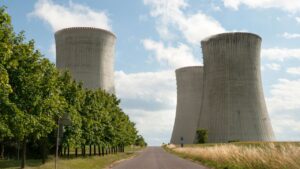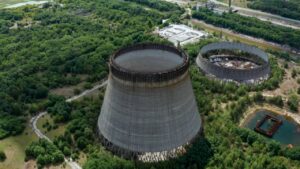In the realm of energy production, one question that looms large is whether nuclear power has become safer with advancements in technology and regulation. This article delves into the intricate interplay between technological advancements and regulatory measures in the nuclear power industry. The aim is to provide you with insights into the current state of nuclear power safety.
Understanding the Evolution of Nuclear Power
To understand the present, we must first delve into the history of nuclear power

. Since its inception, the nuclear energy sector has seen significant transformations. The early days of nuclear power were marked by limited knowledge and safety protocols.
The Chornobyl Disaster: A Watershed Moment
One of the most significant events in the history of nuclear power safety was the Chernobyl disaster. This catastrophic incident in 1986 underscored the importance of stringent regulations and the need for technological advancements. It served as a wake-up call to the global community, prompting a reevaluation of nuclear safety standards.
Technological Advancements

Advanced Reactor Designs
One area where nuclear power has seen substantial progress is in reactor design. Modern reactors are equipped with advanced safety features, such as passive cooling systems and enhanced containment structures. These innovations reduce the risk of accidents and ensure better safety.
Safety Instrumentation and Control Systems
The integration of advanced safety instrumentation and control systems has significantly improved the operational safety of nuclear power plants. These systems allow for real-time monitoring and rapid response to any anomalies, enhancing overall safety.
Regulatory Measures

Strengthened Safety Standards
In response to past incidents, regulatory bodies worldwide have introduced stricter safety standards for nuclear facilities. These standards encompass every aspect of nuclear power generation, from reactor design to waste management.
Comprehensive Training and Simulation
Regulations also mandate comprehensive training and simulation exercises for nuclear plant personnel. This ensures that operators are well-prepared to handle any emergency situations effectively.
The Role of Public Perception
Apart from technology and regulations, public perception plays a crucial role in determining the safety of nuclear power. Addressing public concerns and fostering transparency is vital for the continued growth of nuclear energy.
Conclusion
In conclusion, nuclear power has indeed become safer with advancements in technology and regulation. The lessons learned from past disasters have driven innovation and the establishment of stringent safety measures. As a result, nuclear energy continues to be a viable and increasingly safe source of power.
FAQs
Q1: Are nuclear power plants entirely risk-free now?
No, while nuclear power plants have become much safer, there is no such thing as a completely risk-free energy source. Stringent safety measures minimize risks but do not eliminate them entirely.
Q2: How do advanced reactor designs enhance safety?
Advanced reactor designs incorporate passive safety features that can cool the reactor without human intervention, reducing the risk of overheating and potential meltdowns.
Q3: What role do international organizations play in nuclear safety?
International organizations like the International Atomic Energy Agency (IAEA) play a crucial role in setting global standards and guidelines for nuclear safety.
Q4: How has public perception influenced nuclear power safety?
Public perception has prompted governments and industry stakeholders to prioritize safety and transparency, leading to stricter regulations and improved safety measures.
Q5: Is nuclear power a sustainable energy source for the future?
Nuclear power is considered a sustainable energy source due to its low greenhouse gas emissions, but its long-term sustainability depends on effective waste management and continued safety improvements.

